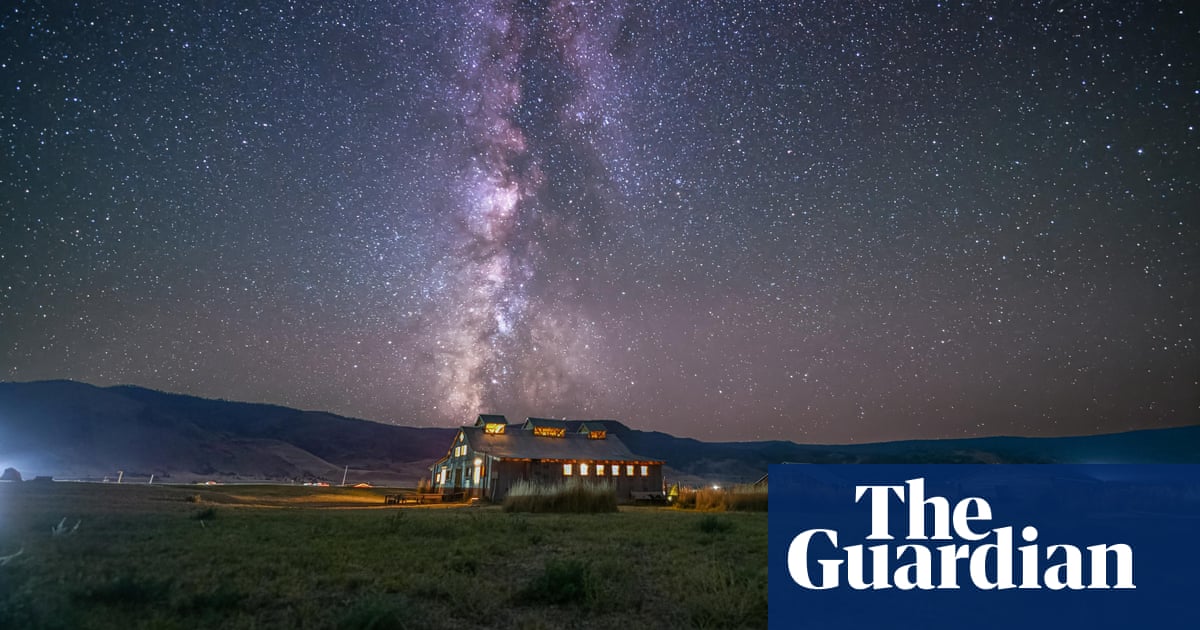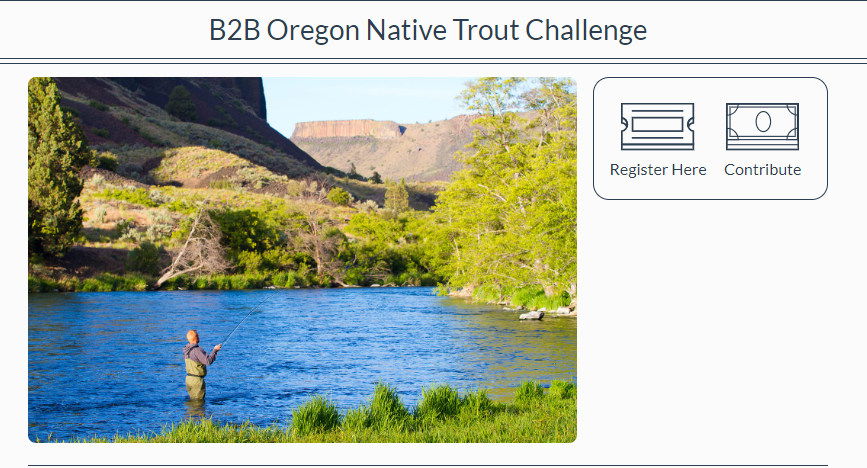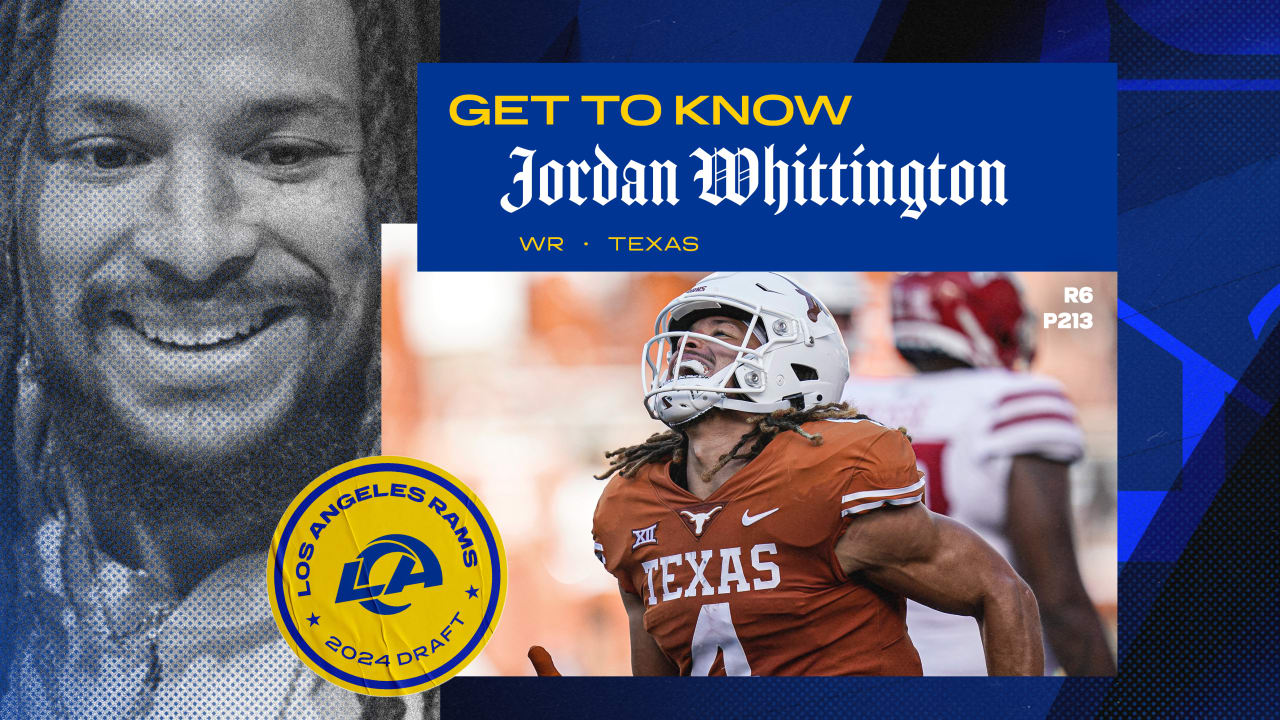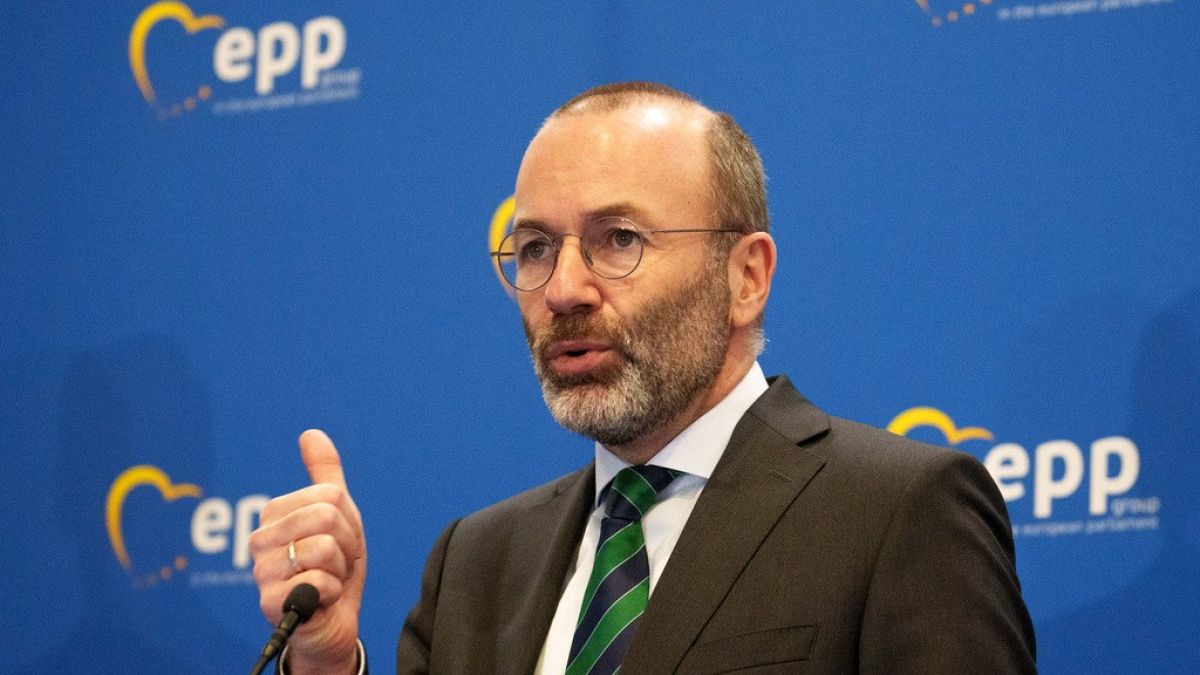Oregon
Stargazer’s paradise: Oregon area named world’s largest dark sky sanctuary

With clear skies and sparse trees, the Oregon outback has long been regarded as a stargazersâ paradise. Now the region is home to the worldâs largest dark sky sanctuary, offering pristine views of the night sky across 2.5m acres.
The Oregon outback international dark sky sanctuary received the certification this week, becoming the largest of 19 sites around the world with the same designation. The sanctuary covers Lake county in south-eastern Oregon, a remote area roughly half the size of New Jersey, and could eventually expand to include more than 11m acres.
The regionâs skies are already among the darkest in the world, according to a statement from DarkSky International, and the certification will ensure the area remains protected.
âAs the population of Oregon and the trend of light pollution continue to rise, the unparalleled scale and quality of the outbackâs dark skies will long serve as a starry refuge for people and wildlife alike,â said Dawn Nilson, an environmental consultant who authored the areaâs application for the certification.
The high-desert region is also home to one of the oldest known human occupation sites in North America and portions of the Pacific Flyway, a key aerial highway for migratory birds, and is an important habitat for bighorn sheep and sage grouse. Its skies are commonly described as âinky or velvety blackâ, and the isolation of the region and lack of buildings and power lines often shocks visitors, according to Travel Southern Oregon.
The area is incredibly remote â and stunning, said Bob Hackett, the executive director of Travel Southern Oregon, who helped facilitate the nomination.
âIf you drive up, youâre going to be in the middle of 2.5m acres of sagebrush and rock and antelope, and itâs going to be a very remote experience by design. Thatâs why itâs so dark,â Hackett said.
âItâs surprising sometimes to see that many stars all at once. It catches you and it makes you pause because you feel like you can touch it,â he said. âItâs a very personal experience that most people are going to experience by themselves or with a close friend or family and thatâs right. That vastness of the whole cosmos up there â it almost makes you get closer to the people youâre with on the ground.â
Given its remoteness, visitors should be prepared before traveling to the area, he added.
The certification involved a years-long arduous effort by federal, state and local officials, community members and several legal jurisdictions. It required parties to agree to the plan as well as monitor the night sky and institute lighting improvements, DarkSky International said in a statement. Almost 1.7m acres of the sanctuary are overseen by the US Bureau of Land Management.
Tourism officials hope that the designation will help boost tourism in the region in a way that benefits local communities.
âWe are going to leave this landscape better for the work that we did and also drive community economic development in a way [communities] choose,â Hackett said.
The Oregon sanctuary is among more than 200 places around the world that have sought to protect the night sky, according to DarkSky International. Other locations include Californiaâs Death Valley, Exmoor national park in the UK and Ainos national park on the Greek island of Kefalonia. The initiative began more than 20 years ago to encourage the protection of dark sites through âeffective lighting policies, environmentally responsible outdoor lighting and public educationâ, according to DarkSky International.

Oregon
Biden team’s tightrope: reining in rogue Obamacare agents without slowing enrollment • Oregon Capital Chronicle

President Joe Biden counts among his accomplishments the record-high number of people, more than 21 million, who enrolled in Obamacare plans this year. Behind the scenes, however, federal regulators are contending with a problem that affects people’s coverage: rogue brokers who have signed people up for Affordable Care Act plans, or switched them into new ones, without their permission.
Fighting the problem presents tension for the administration: how to thwart the bad actors without affecting ACA sign-ups.
Complaints about these unauthorized changes — which can cause affected policyholders to lose access to medical care, pay higher deductibles or even incur surprise tax bills — rose sharply in recent months, according to brokers who contacted KFF Health News and federal workers who asked not to be identified.
Ronnell Nolan, president and CEO of the trade association Health Agents for America, said her group has suggested to the Centers for Medicare & Medicaid Services that it add two-factor authentication to healthcare.gov or send text alerts to consumers if an agent tries to access their accounts. But the agency told her it doesn’t always have up-to-date contact information.
“We’ve given them a whole host of ideas,” she said. “They say, ‘Be careful what you wish for.’ But we don’t mind going an extra step if you can stop this fraud and abuse, because clients are being hurt.”
Some consumers are pursued when they respond to misleading social media marketing ads promising government subsidies, but most have no idea how they fell victim to plan-switching. Problems seem concentrated in the 32 states using the federal exchange.
Federal regulators have declined to say how many complaints about unauthorized sign-ups or plan switches they’ve received, or how many insurance agents they’ve sanctioned as a result. But the problem is big enough that CMS says it’s working on technological and regulatory solutions. Affected consumers and agents have filed a civil lawsuit in federal district court in Florida against private-sector firms allegedly involved in unauthorized switching schemes.
Biden has pushed hard to make permanent the enhanced subsidies first put in place during the covid pandemic that, along with other steps including increased federal funding for outreach, helped fuel the strong enrollment growth. Biden contrasts his support for the ACA with the stance of former President Donald Trump, who supported attempts to repeal most of the law and presided over funding cuts and declining enrollment.
Most proposed solutions to the rogue-agent problem involve making it more difficult for agents to access policyholder information or requiring wider use of identity questions tied to enrollees’ credit history. The latter could be stumbling blocks for low-income people or those with limited financial records, said Sabrina Corlette, co-director of the Center on Health Insurance Reforms at Georgetown University.
“That is the knife edge the administration has to walk,” said Corlette, “protecting consumers from fraudulent behavior while at the same time making sure there aren’t too many barriers.”
Jeff Wu, acting director of the Center for Consumer Information & Insurance Oversight, said in a statement that the agency is evaluating options on such factors as how effective they would be, their impact on consumers’ ability to enroll, and how fast they could be implemented.
The agency is also working closely, he wrote, with insurance companies, state insurance departments, and law enforcement “so that agents violating CMS rules or committing fraud face consequences.” And it is reaching out to states that run their own ACA markets for ideas.
That’s because Washington, D.C., and the 18 states that run their own ACA marketplaces have reported far fewer complaints about unauthorized enrollment and plan-switching. Most include layers of security in addition to those the federal marketplace has in place — some use two-factor authentication — before agents can access policyholder information.
California, for example, allows consumers to designate an agent and to “log in and add or remove an agent at will,” said Robert Kingston, interim director of outreach and sales for Covered California, the state’s ACA marketplace. The state can also send consumers a one-time passcode to share with an agent of their choice. Consumers in Colorado and Pennsylvania can similarly designate specific agents to access their accounts.
By contrast, agents can more easily access policyholder information when using private-sector websites that link them to the federal ACA market — all they need is a person’s name, date of birth, and state of residence — to enroll them or switch their coverage.
CMS has approved dozens of such “enhanced direct enrollment” websites run by private companies, which are designed to make it easier and faster for agents certified to offer insurance through healthcare.gov.
Rules went into effect last June requiring agents to get written or recorded consent from clients before enrolling them or changing their coverage, but brokers say they’re rarely asked to produce the documentation. If CMS makes changes to healthcare.gov — such as adding passcodes, as California has — it would need to require all alternative-enrollment partners to do the same.
The largest is San Francisco-based HealthSherpa, which assisted 52% of active enrollments nationally for this year, said CEO George Kalogeropoulos.
The company has a 10-person fraud investigation team, he said, which has seen “a significant spike in concerns about unauthorized switching.” They report problems to state insurance departments, insurance carriers, and federal regulators “and refer consumers to advocates on our team to make sure their plans are corrected.”
Solutions must be “targeted,” he said. “The issue with some of the solutions proposed is it negatively impacts the ability of all consumers to get enrolled.”
Most people who sign up for ACA plans are aided by agents or platforms like HealthSherpa, rather than doing it themselves or seeking help from nonprofit organizations. Brokers don’t charge consumers; instead, they receive commissions from insurers participating in state and federal marketplaces for each person they enroll in a plan.
While California officials say their additional layers of authentication have not noticeably affected enrollment numbers, the state’s recent enrollment growth has been slower than in states served by healthcare.gov.
Still, Covered California’s Kingston pointed to a decreased number of uninsured people in the state. In 2014, when much of the ACA was implemented, 12.5% of Californians were uninsured, falling to 6.5% in 2022, according to data compiled by KFF. That year, the share of people uninsured nationwide was 8%.
Corlette said insurers have a role to play, as do states and CMS.
“Are there algorithms that can say, ‘This is a broker with outlier behavior’?” Insurance companies could then withhold commissions “until they can figure it out,” she said.
Kelley Schultz, vice president of commercial policy at AHIP, the trade association for large insurance companies, said sharing more information from the government marketplace about which policies are being switched could help insurers spot patterns.
CMS could also set limits on plan switches, as there is generally no legitimate need for multiple changes in a given month, Schultz said.
KFF Health News is a national newsroom that produces in-depth journalism about health issues and is one of the core operating programs at KFF—an independent source of health policy research, polling, and journalism. Learn more about KFF.
Oregon
Oregon Football’s Box Nix Embraces ‘Day-to-Day’ Broncos Adjustment

Former Oregon Ducks star Bo Nix, the Denver Broncos’ first-round draft pick, is taking a day-by-day approach to navigating the team’s rookie minicamp.
“It’s a day-to-day process,” Nix said. “You have to go from one meeting to a practice to a walkthrough. You have to take them one at a time, just learn as much as you can and not make the same mistake twice.”
Nix is learning from Broncos coach Sean Payton, who has much knowledge and experience to share, with a proven track record of producing dynamic results with various quarterbacks, notably winning a Super Bowl with Drew Brees during his time while coaching the New Orleans Saints.
“He’s been awesome,” Nix said. “He’s been teaching me so much already. He’s got a lot of knowledge, and he’s built a pedigree of when he talks, you listen. That is what I am excited [about]. To continue learning from him more and more each day as we go through practice and walkthroughs. You just can’t learn enough from him.”
As Nix works to digest the playbook and execute plays on the field, he’s relying on his coaches to help him break it down. The reps he gets in rookie minicamp are his initial opportunities to put what he’s studied into practice, familiarizing him with the nuances of the offense.
“It’s all about studying and taking one play at a time,” Nix explained. “Master it and make sure you know the fundamentals and technique of that play and what the play-caller’s intent is. Essentially, they just want to see you got out and execute it. It’s my job as a quarterback to get the plays started and get the ball where it’s supposed to be. A lot of that is completing passes and run-game operation.
“It can be a lot but I feel like I’m being taught really well by the coaches,” Nix explained. “They’re doing a really good job of narrowing everything down and making it simple so I can just get up there, process and play really fast.”
Beyond just learning the Broncos’ offense, Nix recognizes the importance of leadership and building relationships with his new teammates. Not only does having this familiarity help in the long run, but the connection players establish entering the NFL tends to last many years.
“Just be myself,” Nix said. “You’re not going to be able to do it all at once. It’s going to [be] day-by-day. The most important thing is being a great teammate and learning my new teammates. Being around them and forming great relationships with them. They just want to see guys who can go out there and play hard for each other. That’s what most leaders are able to do.”
The rookie quarterback is thrilled to be in Denver and is embracing the pressure that comes with wearing a Broncos jersey.
“I’m super excited,” Nix said. “I’ve only been here for a couple of days and can’t wait to get out and about and go see everything. I’m super excited to be here. The city is incredible. I can’t believe I get to wear a Broncos jersey and go out there and do what so many greats have done before me. I don’t take that lightly and I’m not going to take it for granted. Pressure gives you opportunities. The more pressure and responsibility you have, the more you have to go out there and consistently earn it.”
With his poise, patience, and pinpoint passing, Nix is already making a positive impression on his coaches and teammates. As he continues to learn and grow, he’s eager to prove himself and contribute to the team’s success.
READ MORE: Oregon Football’s Troy Franklin Reveals Goals In Broncos Rookie Minicamp
READ MORE: Oregon Football Powerhouse: ‘Buying Stock’ In Coach Dan Lanning
READ MORE: Oregon Football’s Bo Nix Impresses Broncos’ Sean Payton at Rookie Minicamp
Oregon
Registration open for inaugural Oregon Native Trout Challenge – KTVZ

PORTLAND, Ore. (KTVZ) — Anglers, grab your favorite fishing rig and a map, as registration is now open for the inaugural Oregon Native Trout Challenge.
Basalt to Breakers, an Oregon nonprofit with fiscal sponsorship by the Oregon Wildlife Foundation, is launching the Oregon Native Trout Challenge to encourage anglers to explore new waters, celebrate the diversity of Oregon’s native trout fisheries and support projects that conserve our native trout species.
“The challenge is intended to be a celebration of Oregon’s native trout species and the ecosystems that support their populations. We intentionally made this challenge different from other native trout challenges to encourage people to explore the diverse ecosystems that Oregon offers,” said B2B Founder Max McCool. “Completing the challenge consists of catching and taking a picture of any native trout species caught in each of Oregon’s eight ecoregions and submitting the location, date, and species through our online form,” continued McCool.
The Challenge is catch-and-release. “We want to ensure that each participant follows ODFW regulations throughout the challenge and isn’t putting additional pressure on any vulnerable species,” said McCool.
Each catch must be documented according to the Challenge rules to count. A one-time entry fee of $35 offsets the administrative costs of the challenge with net proceeds used for habitat restoration, trout conservation, and education projects. Beyond learning more about Oregon’s native trout species and our diverse ecoregions, the Oregon Native Trout Challenge seeks to encourage advocacy for local fisheries.
“In Oregon, salmon get the lion’s share of attention, but Oregon has stellar trout fishing throughout our state. What I like most about the Oregon Native Trout Challenge is that it encourages anglers to explore more of what Oregon has to offer,” said Tim Greseth, Oregon Wildlife Foundation’s executive director.
Participants can register at https://owhf.tofinoauctions.com/b2bchallenge24/homepages/show. For more information, visit www.basalttobreakers.org.
Basalt to Breakers
is a nonprofit corporation registered in the State of Oregon. The mission of Basalt to Breakers is to inspire, educate and engage all anglers throughout Oregon in native trout conservation projects. Basalt to Breakers is sponsored by the Oregon Wildlife Foundation. To support B2B with a tax-deductible gift, visit https://secure.givelively.org/donate/oregon-wildlife-foundation/basalt-to-breakers-oregon-native-trout-challenge.
Oregon Wildlife Foundation
is an apolitical operating charitable foundation dedicated to increasing private and public funding support for wildlife conservation projects in Oregon. Since 1981, OWF has directed tens of millions of dollars in private and public support to a broad range of projects throughout Oregon. For more information, visit www.myOWF.org.
-

 World1 week ago
World1 week agoBrussels, my love? Champage cracked open to celebrate the Big Bang
-

 Politics1 week ago
Politics1 week agoAustralian lawmakers send letter urging Biden to drop case against Julian Assange on World Press Freedom Day
-

 Education1 week ago
Education1 week agoHow Counterprotesters at U.C.L.A. Provoked Violence, Unchecked for Hours
-
News1 week ago
A group of Republicans has united to defend the legitimacy of US elections and those who run them
-

 Politics1 week ago
Politics1 week agoHouse Dems seeking re-election seemingly reverse course, call on Biden to 'bring order to the southern border'
-

 World1 week ago
World1 week ago‘It’s going to be worse’: Brazil braces for more pain amid record flooding
-

 Politics1 week ago
Politics1 week ago'Stop the invasion': Migrant flights in battleground state ignite bipartisan backlash from lawmakers
-

 World1 week ago
World1 week agoGerman socialist candidate attacked before EU elections













